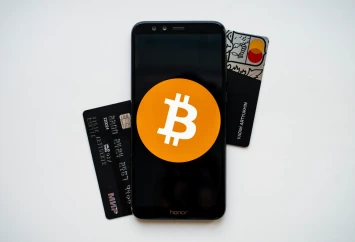Crypto philanthropy, the use of cryptocurrencies like Bitcoin, Ethereum, and other digital assets for charitable giving, is transforming how individuals and organizations support causes they care about. By leveraging blockchain technology’s benefits—transparency, security, and borderless transactions—this innovative approach enhances the impact of donations.
For crypto donors, contributing digital assets directly to qualified charities can yield significant tax advantages. These include eliminating capital gains taxes and securing charitable deductions based on the fair market value of the donated assets.
As the crypto market expands, interest in crypto philanthropy is growing. Nonprofits are increasingly accepting cryptocurrency donations to diversify their funding and connect with tech-savvy donors.
Platforms like The Giving Block and Fidelity Charitable simplify the process of donating digital assets, supporting various causes such as education, healthcare, environmental conservation, and social initiatives.
Beyond the technical aspects, crypto philanthropy is about community and impact. Inspiring examples, such as the Pineapple Fund’s Bitcoin donations and individual donors supporting local charities, showcase the potential of digital currencies to drive meaningful change.
The Mechanisms of Crypto Philanthropy

Understanding Cryptocurrency Donations
Cryptocurrency donations involve a distinct set of processes and considerations that set them apart from traditional forms of giving. When donors contribute cryptocurrency to a charity, they transfer digital assets from their wallet to the charity’s wallet.
This transaction is recorded on a blockchain, ensuring transparency and security. Donors have the option to donate anonymously; however, providing personal information is often required for tax purposes and to receive a donation receipt.
Nonprofits can accept cryptocurrency donations through various methods. One common approach is utilizing a crypto donation processor, such as The Giving Block or FreeWill, which automates the receipt and conversion of cryptocurrency into cash. This simplifies the process for both donors and nonprofits by managing the technical aspects of the transaction and ensuring compliance with IRS regulations.
Another option involves using an intermediary 501(c)(3) organization or a donor-advised fund (DAF) to accept cryptocurrency donations. This method allows nonprofits to receive cash grants without directly handling cryptocurrency, thereby reducing legal, accounting, and administrative complexities.
For example, Fidelity Charitable is a widely-used DAF that facilitates cryptocurrency donations and converts them into cash for the benefiting nonprofit.
Blockchain Technology and Charity
Blockchain technology serves as the foundation of crypto philanthropy, providing numerous advantages that enhance the charitable giving process. Its decentralized nature ensures transactions are transparent, secure, and tamper-proof.
This transparency allows donors to track their contributions in real-time, guaranteeing their funds are used as intended. Additionally, blockchain reduces the need for intermediaries, lowering transaction costs and improving donation efficiency.
Blockchain also enables the use of smart contracts, which can automate various aspects of the donation process. For instance, smart contracts can be programmed to transfer funds to a charity automatically once certain conditions are met, such as achieving a specific fundraising target. This automation streamlines the donation process and enhances reliability.
Moreover, blockchain technology supports the donation of non-fungible tokens (NFTs), which can be utilized to raise funds for charitable causes. NFTs can be auctioned, with proceeds benefiting the charity, or donated directly to the organization.
This innovation expands the types of digital assets available for philanthropy, offering creative and diverse ways for donors to support their favorite causes.
Benefits of Crypto Philanthropy

Enhanced Transparency and Trust
The use of blockchain technology in crypto philanthropy offers unparalleled transparency, which is a significant benefit for both donors and charities. Every transaction on the blockchain is recorded and publicly visible, allowing donors to track their donations in real-time and ensure that their funds are being used as intended. This transparency builds trust and accountability within the philanthropic process, reducing the risk of fraud and mismanagement of funds.
Additionally, the immutable nature of blockchain records ensures that once a transaction is made, it cannot be altered or deleted. This adds a layer of security and reliability to the donation process, making it more trustworthy for donors who want to ensure their contributions are making a genuine impact.
Global Reach and Lower Transaction Costs
Crypto philanthropy enables charities to reach a global audience with ease, breaking down traditional barriers associated with cross-border transactions. Cryptocurrencies can be transferred across the globe in a matter of minutes, regardless of the donor’s and charity’s locations.
This global reach is facilitated by the decentralized nature of blockchain technology, which eliminates the need for intermediaries and reduces transaction costs.
Compared to traditional payment methods, cryptocurrency transactions are generally faster and less expensive. This efficiency is particularly beneficial for nonprofits that require immediate funding, especially in emergency situations or for projects that need rapid deployment of resources.
Engaging New Donor Demographics
Crypto philanthropy has the potential to engage a new and younger demographic of donors who are more comfortable with digital assets. More than 60% of crypto users are under the age of 40, which is significantly younger than the average age of traditional donors. This shift in donor demographics can help charities tap into a new pool of potential supporters who are tech-savvy and inclined to donate digital assets.
The crypto community is also shown to be more philanthropic than the average donor, with a higher average donation size compared to traditional fiat donors. This trend indicates that accepting cryptocurrency donations can not only broaden a charity’s donor base but also increase the overall value of the donations received.
Challenges and Considerations

Addressing Volatility and Regulatory Challenges
Despite the numerous benefits of crypto philanthropy, several challenges and considerations must be addressed to ensure its successful implementation. One of the most significant hurdles is the volatility of the cryptocurrency market.
The value of cryptocurrencies like Bitcoin and Ethereum can fluctuate dramatically, which can impact the value of donations received by nonprofits. For instance, a donation made at a high market value could significantly decrease in value by the time it is converted into fiat currency, affecting the charity’s ability to utilize the funds effectively.
Regulatory challenges also pose a significant obstacle. The legal and regulatory landscape surrounding cryptocurrency is still evolving and varies widely across different countries. Nonprofits must navigate these complexities to ensure compliance with local laws and regulations, which can be time-consuming and costly.
For example, the lack of clear legal protection for blockchain recipients of donations can be harmful in the long term, and the absence of a central governing body or auditor can add to the uncertainty.
In addition, the process of converting cryptocurrency into traditional currency can be complex and may involve significant fees. This conversion process, often handled by intermediaries or donation platforms, can reduce the net value of the donation, impacting the charity’s overall revenue. Therefore, nonprofits need to carefully select the platforms and methods they use to accept and convert cryptocurrency donations.
Educational Barriers and Technological Adoption
Educational barriers are another critical challenge in the adoption of crypto philanthropy. Many nonprofits and their stakeholders may not fully understand the benefits and mechanics of cryptocurrency donations, leading to what is often referred to as “FUD” (fear, uncertainty, and doubt). Common myths, such as the belief that cryptocurrency is a passing fad or that it is primarily used by criminals, can deter nonprofits from exploring this new revenue stream.
Technological adoption is also a significant consideration. While blockchain technology offers transparency and security, it requires a certain level of technical expertise to implement and manage effectively.
Nonprofits may need to invest in training their staff or hiring external experts to handle the technical aspects of accepting and managing cryptocurrency donations. Additionally, the high energy consumption associated with cryptocurrency mining can be a concern for environmentally conscious donors and nonprofits.
Moreover, the integration of digital assets into existing fundraising strategies can be challenging. Nonprofits need to educate their current donor base about the benefits of crypto donations, such as tax incentives and the potential for higher-value donations.
This educational effort is essential to overcome the initial skepticism and to articulate the facts about crypto philanthropy clearly.
Real-World Impact and Case Studies
Notable Success Stories
Crypto philanthropy has already made a significant impact in various real-world scenarios, showcasing its potential to drive meaningful change. One of the most notable examples is the Pineapple Fund, initiated by an anonymous bitcoiner known as “Pine.” This fund donated approximately $55 million in Bitcoin to 60 different charities, marking one of the earliest and most substantial crypto philanthropic efforts.
This initiative not only highlighted the generosity of the crypto community but also brought crypto philanthropy into the mainstream spotlight.
Vitalik Buterin, the co-founder of Ethereum, is another prominent figure in crypto philanthropy. Buterin has made significant donations, including a historic $9.4 million in USDC stablecoins to the University of Maryland for medical research aimed at preventing future pandemics.
His contributions have also supported COVID-19 relief efforts and Ukrainian aid, demonstrating the breadth of impact that individual crypto philanthropists can have.
Inna Modja, through her organization CodeGreen, has mobilized donors, collectors, artists, and projects in the web3 space to address issues such as social justice, climate justice, and humanitarian emergencies. Her efforts have directed millions of dollars in crypto donations to various charities, showcasing the power of combining art, technology, and philanthropy.
The Giving Block has also facilitated numerous successful crypto fundraising campaigns. For instance, Orangutan Outreach, a nonprofit dedicated to protecting and caring for displaced orangutans, raised over $1 million in crypto and NFT-related donations through The Giving Block. This funding significantly boosted their operational budget and highlighted the potential of crypto donations in supporting specific causes.
Future Potential of Crypto in Philanthropy
The future of crypto philanthropy looks promising, with several indicators suggesting continued growth and increased impact. The Giving Block’s 2025 Annual Report on Crypto Philanthropy revealed that 2024 was the highest year on record for crypto donations, with over $1 billion donated to nonprofits. This trend is expected to continue, driven by a strengthening crypto market, increased adoption of crypto-based giving, and a supportive political landscape.
The integration of NFTs into philanthropy is another area with significant potential. NFTs can be programmed to automatically donate a portion of their sale price and future royalties to charities, creating a sustainable and recurring donation stream. This innovative approach has already shown success, with NFT-related donations accounting for 20% to 30% of the total donations on The Giving Block’s platform.
Moreover, the rise of AI-driven investors in the crypto philanthropy space is expected to further fuel growth. As AI technology becomes more prevalent, it could help streamline the donation process, enhance transparency, and optimize the impact of crypto donations. This convergence of AI and blockchain technology holds the promise of revolutionizing how philanthropy is conducted and measured.
Embracing philanthropy is also seen as a key strategy for improving the public image of the crypto sector. By demonstrating a commitment to social good, crypto leaders can build trust and credibility, addressing some of the sector’s image problems and fostering broader acceptance.
Platforms like The Giving Block are pivotal in this effort, helping nonprofits navigate the complexities of crypto donations and ensuring that these donations are used effectively.
Conclusion
Crypto philanthropy is revolutionizing the way charitable giving is done, offering unmatched opportunities for transparency, global accessibility, and cost efficiency. Key highlights include the rising adoption of cryptocurrency donations, with over $2 billion donated globally in the last five years, and an average crypto donation size that surpasses traditional contributions.
The advantages of crypto philanthropy are evident: it attracts a new and generous demographic of donors, minimizes transaction fees, and ensures transparency through blockchain technology. Nonetheless, nonprofits should also consider the challenges, such as market volatility and regulatory hurdles.
With the crypto market poised for significant growth in the years ahead, nonprofits have a unique chance to capitalize on this innovative funding source. By gaining a thorough understanding of the workings, benefits, and potential challenges of crypto philanthropy, organizations can position themselves for sustained success and increased impact.
We strongly encourage all nonprofits to explore crypto donations and utilize platforms like The Giving Block and Givepact to streamline the process. Together, we can harness the transformative power of cryptocurrency to drive meaningful change and foster a more philanthropic and interconnected global community.


